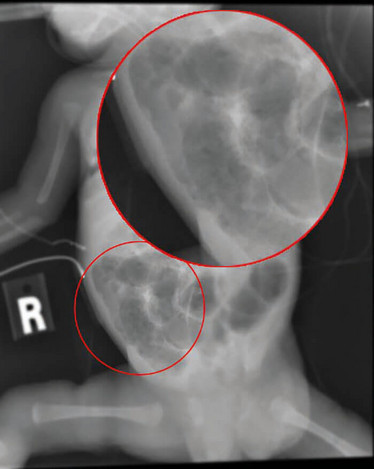Baby Biomarkers
Identifying babies at risk of deadly gastrointestinal disease through microbiomics
Necrotizing enterocolitis (NEC) affects 10 percent of premature infants, and is the second most common cause of death in premature babies. “In the four decades since NEC was widely recognized, we’ve made very little progress in our understanding of its etiology, or a treatment. However, a number of lines of evidence suggested a microbial role,” says Barbara Warner, Medical Director of the Fetal Care Center at the Washington University School of Medicine.

Warner is the first author on a paper where researchers used gene sequencing techniques and statistical tools to analyze stool samples from low-birthweight infants in search of correlations between the disease and the makeup of the gut microbial community (1). The results indicated that the microbial flora of infants who went on to develop NEC differed significantly from those who didn't, with a rise in the proportion of Gammaproteobacteria, and drop in other groups. “Our data suggest, but don’t yet prove, that by diminishing the over-representation of gram-negative bacilli, and increasing the under-representation of obligate anaerobes, we might reduce the risk of NEC in low birthweight infants”, explains Phillip Tarr, principal investigator and co-leader of the Pathology Research Unit in the Department of Pediatrics also at Washington University School of Medicine.
The team hope the study could lead to diagnostics that predict the likelihood of NEC or even a potential treatment. “After our insightful results, the next step is working towards correcting the dysbiosis that we recognized in the gut,” says Warner.
- BB Warner et al., “Gut bacteria dysbiosis and necrotising enterocolitis in very low birthweight infants: a prospective case-control study”, Lancet, (2016).
My fascination with science, gaming, and writing led to my studying biology at university, while simultaneously working as an online games journalist. After university, I travelled across Europe, working on a novel and developing a game, before finding my way to Texere. As Associate Editor, I’m evolving my loves of science and writing, while continuing to pursue my passion for gaming and creative writing in a personal capacity.















